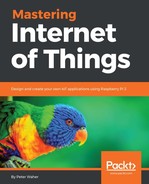Application-layer interfaces can be either tightly coupled or loosely coupled. Applications using tightly coupled interfaces require previous knowledge about the detailed functionality of each other. This makes them deterministic and simple to implement and test, but also difficult to extend outside of the intended use cases.
Applications using loosely coupled interfaces on the other hand, avoid making assumptions about the capabilities of the other party. Instead, metadata is used to describe the capabilities, allowing each participant to discover the capabilities of the other. Implementing loosely coupled architectures is more demanding, but the results become more flexible. It's easier to extend and to maintain backwards compatibility in loosely coupled architectures. Testing, on the other hand, becomes more difficult, since variations and complexity increases.
We will begin our journey into the realm of interoperability, by introducing some tightly coupled interfaces, based on CoAP. Since applications using CoAP strive to work well in resource constrained networks, tightly coupled interfaces provide a good option. These allow for more compact messages since a minimum of metadata is required to be transmitted. In the following sections, we will contrast these by presenting some loosely coupled alternatives and examine the differences.
